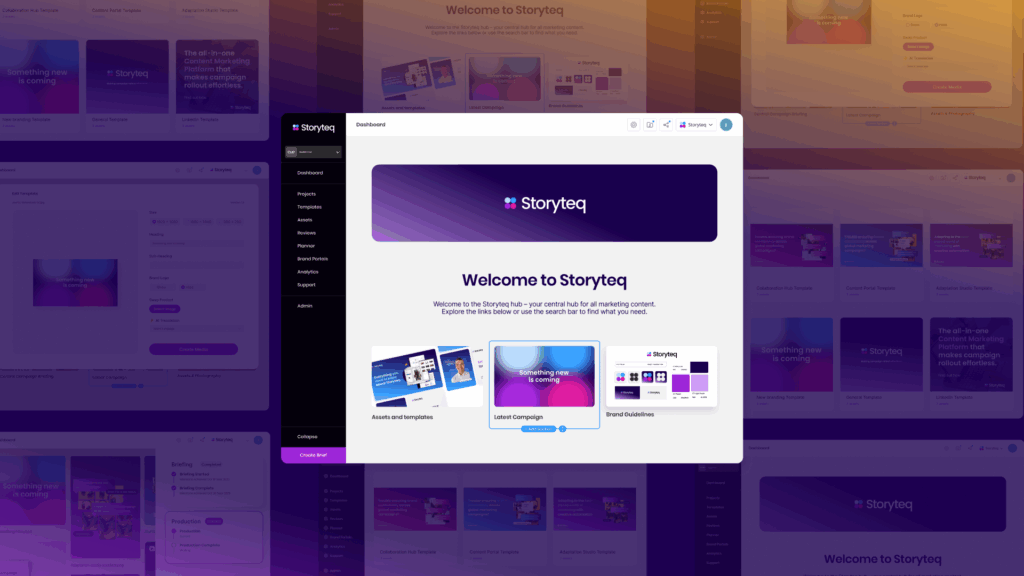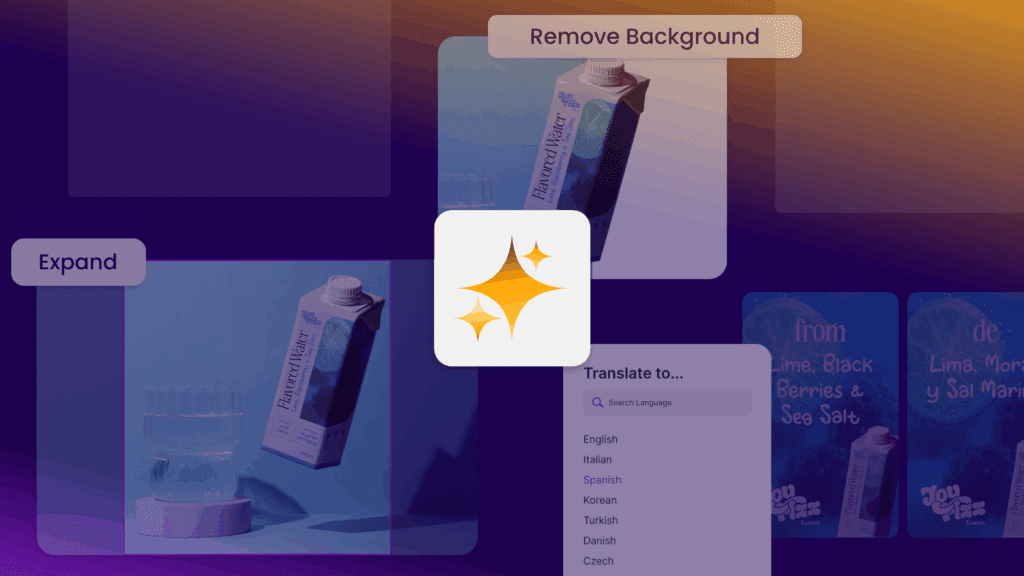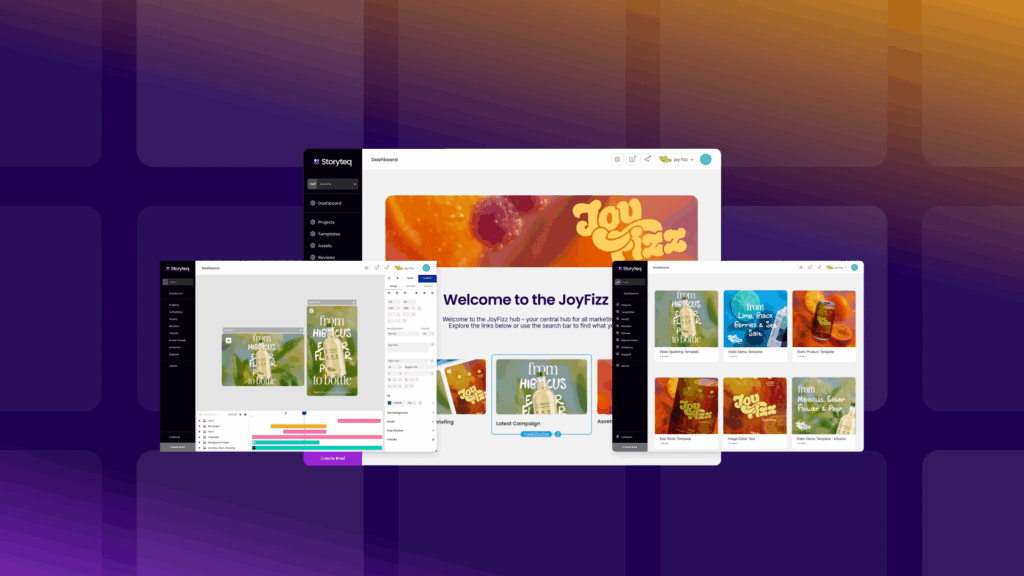What is content automation?
Content automation refers to the systematic use of technology to create, manage, distribute, and optimize marketing content with minimal manual intervention. It involves using specialized software to streamline repetitive content tasks, allowing marketing teams to produce more assets at scale while maintaining creative quality and brand consistency. Unlike general marketing automation, which focuses primarily on campaign delivery and lead nurturing workflows, content automation specifically targets the creation and adaptation phases of marketing materials.
When you automate content marketing, you’re not replacing human creativity but enhancing it. The technology handles the tedious, time-consuming aspects of content production—such as formatting, versioning, and distribution—while your team maintains creative control over messaging, strategy, and brand voice. This distinction matters: content automation tools serve as enablers that free you from mundane tasks, allowing you to focus on high-value creative work and strategic thinking.
Content automation solutions typically use templates, rules, and data feeds to generate variations of content automatically. For instance, you might create a master template for a product advertisement, then use automation to produce dozens of versions with different texts, images, languages, or formats—all while preserving your core design and brand guidelines.
Why is content automation becoming important for marketers?
You now face unprecedented pressure to deliver more content across more channels than ever before. The average enterprise now manages content across 10 or more digital platforms, each requiring unique formats and specifications. Meanwhile, audience expectations for personalization continue to rise, with 80% of consumers more likely to purchase from brands that provide personalized experiences.
These demands create significant bottlenecks in content creation. Marketing teams often spend up to 70% of their time on repetitive tasks rather than strategic initiatives. When designers receive requests to create multiple versions of advertisements for different markets, platforms, or audience segments, they face hours of tedious adaptation work that limits their creative potential.
Content automation addresses these challenges by dramatically accelerating production processes. Rather than spending days creating variations manually, you can generate hundreds of content pieces in minutes. This capability is becoming more relevant as the gap between content demand and production capacity continues to widen across industries. By automating repetitive elements, you can reallocate resources to higher-value activities while meeting the growing need for high-volume, personalized content across multiple touchpoints.
Types of content that can be automated
Many content formats benefit from automation, each with specific use cases that demonstrate the technology’s versatility. Social media content, for instance, can be automatically formatted for different platforms, with variations in image dimensions, text length, and hashtag usage generated from a single master post. This eliminates the need to manually recreate content for each channel.
Email campaigns represent another prime opportunity for automation. Using dynamic templates, you can create personalized email content that adapts based on recipient data. This might include different product recommendations, offers, or messaging tailored to specific segments or individual behaviors. The system automatically generates each email variation while maintaining brand consistency.
Video content, traditionally one of the most resource-intensive formats, can also be transformed through automation. A single video template can spawn dozens of variations with different calls-to-action, product features, languages, or regional references. For global brands, this capability dramatically reduces production time and costs while ensuring consistent messaging across markets.
Other content types suited for automation include:
- Product descriptions that adapt based on specifications, features, and target markets
- Data-driven reports that automatically update with fresh information
- Localized content that adjusts language, cultural references, and regulatory information
- Banner advertisements sized and formatted for different display networks
How does content automation technology work?
At its foundation, content automation relies on sophisticated templating systems that separate content structure from variable elements. These templates identify which components remain fixed (like branding elements) and which can change (like text, images, or call-to-action buttons). The technology then applies rule-based logic to determine how these variable elements should adapt across different versions.
A typical content automation workflow includes several key stages:
- Creating master templates with designated dynamic fields
- Establishing rules that define how content adapts in different scenarios
- Connecting data sources that populate the variable content (product information, audience segments, regional details)
- Generating multiple content variations automatically
- Publishing or distributing these variations across appropriate channels
More advanced systems incorporate artificial intelligence to enhance these capabilities. AI can analyze performance data to recommend optimizations, automatically select the most appropriate images from a media library, or even generate text variations that maintain consistent tone and messaging. These platforms often integrate with your existing marketing technology stack through APIs, enabling seamless data flow between systems.
The most effective content automation tools operate with modular content frameworks. Rather than treating each piece as a monolithic unit, they break content into reusable components or “modules” that you can reassemble in different combinations. This approach maximizes flexibility while maintaining governance over brand standards. You can learn more about modular content frameworks and how they support scalable content production.
Benefits of implementing content automation
The advantages of content automation extend far beyond simple efficiency gains. When properly implemented, these systems deliver measurable improvements across multiple dimensions of marketing operations. Perhaps most immediately apparent is the dramatic reduction in production time. Organizations typically report 50-80% faster turnaround for content variations after implementing automation tools. What once took days or weeks can be accomplished in hours or even minutes.
This acceleration naturally translates into cost savings. By reducing manual design work and eliminating redundant processes, you can produce more content without proportionally increasing headcount or agency spending. One global brand reduced overall production costs by 40% after adopting content automation, while simultaneously increasing their output volume.
Brand consistency represents another significant benefit. Centralized templates ensure that all content adheres to brand guidelines regardless of who creates it or which market it serves. This consistency builds stronger brand recognition and trust while reducing the risk of off-brand messaging reaching your audience.
Personalization at scale becomes genuinely achievable through automation. Instead of choosing between personalization and volume, you can deliver both simultaneously. This capability enables more relevant experiences for your audience, driving higher engagement, conversion rates, and customer satisfaction. Testing and optimization also become more practical, as you can quickly generate and deploy multiple content variants to determine which performs best.
Common challenges when adopting content automation
While the benefits are compelling, implementing content automation isn’t without challenges. The initial setup process can be complex, requiring careful planning and resource allocation. Templates must be designed with sufficient flexibility to accommodate various use cases without becoming unwieldy. This balancing act often demands specialized expertise and iterative refinement.
Resistance from creative and marketing teams represents another common hurdle. Designers may worry that automation devalues their skills or constrains their creative freedom. Marketers might question whether automated content can maintain the quality and nuance they strive for. Addressing these concerns requires clear communication about how automation complements rather than replaces human creativity, along with targeted training and change management initiatives.
Integration with existing systems poses technical challenges for many organizations. Content automation must work harmoniously with your digital asset management, content management systems, and marketing platforms. Incompatibilities or data synchronization issues can undermine the efficiency gains you’re seeking to achieve.
To overcome these challenges, consider these practical approaches:
- Start with a limited pilot project focused on high-volume, straightforward content types
- Involve creative teams early in the planning process to incorporate their insights
- Invest in proper training and documentation before full-scale implementation
- Establish clear governance processes that define roles and responsibilities
- Build measurement frameworks to demonstrate ROI and guide optimization
How to get started with content automation
Embarking on your content automation journey requires methodical preparation. Begin by conducting a comprehensive audit of your current content workflows, identifying where bottlenecks occur and which processes involve the most repetitive work. This assessment helps you pinpoint the highest-value opportunities for automation and establishes a baseline for measuring improvements.
Next, evaluate potential automation tools based on your specific requirements. Consider factors such as ease of use, compatibility with existing systems, scalability, and support for your particular content types. Different platforms excel in different areas—some focus on video automation, others on document generation or cross-channel content distribution. Select technology that aligns with your primary use cases and growth trajectory.
When implementing your chosen solution, follow these steps:
- Define clear objectives and success metrics for your automation initiative
- Develop standardized templates for your most frequently produced content
- Create a content taxonomy and metadata structure to organize assets
- Establish workflows that clarify how automation fits within your content lifecycle
- Train team members on both technical skills and new ways of working
- Launch a controlled pilot with a specific content type or campaign
- Measure results, gather feedback, and refine your approach
- Gradually expand to additional content categories as you build confidence
Throughout this process, maintain open communication with stakeholders and be prepared to adjust your strategy based on real-world results. Content automation works best when it evolves alongside your marketing needs rather than remaining static after initial implementation.
The future of content automation
Content automation continues to evolve rapidly, with several emerging trends poised to reshape marketing practices in the coming years. Advanced AI-powered content generation represents one of the most transformative developments. These systems can now create original text, images, and even video based on prompts and parameters, significantly expanding the scope of what you can automate.
Predictive content optimization will increasingly influence how marketing assets are created and deployed. By analyzing performance data across channels and audience segments, AI will automatically suggest or implement content adjustments to maximize engagement and conversion. This capability will shift your role toward more strategic oversight while algorithms handle tactical optimizations.
Cross-channel automation represents another frontier, with systems increasingly capable of coordinating content across the entire customer journey. Rather than treating each channel as a separate entity, future platforms will orchestrate consistent yet channel-appropriate experiences that follow customers as they move between touchpoints.
For you as a marketer, these developments necessitate evolving skill sets. The ability to effectively “direct” automated systems—setting appropriate parameters, evaluating outputs, and providing strategic guidance—will become increasingly valuable. Technical literacy, data analysis capabilities, and strategic thinking will take precedence over production-focused skills.
At Storyteq, we’re passionate about helping marketing teams navigate this evolving landscape. Our content marketing platform helps you automate repetitive content tasks while maintaining creative control and brand consistency. We help you bridge the gap between content demand and production capacity—empowering your team to achieve more without sacrificing quality or creative expression. Ready to transform your content production? Request a demo today and discover how we can help you scale your content creation efforts.



